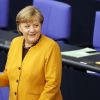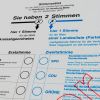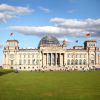Angela Merkel – her political career in pictures
The first female chancellor governed Germany for almost 16 years.
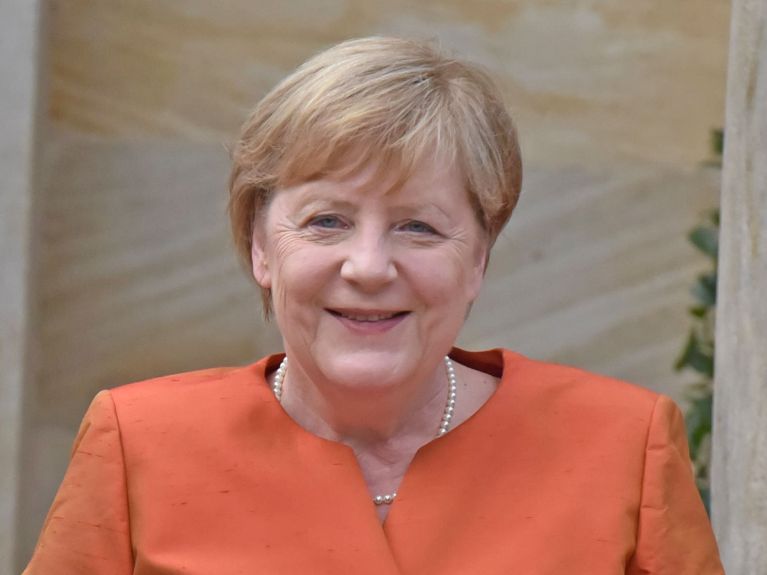
Angela Merkel was born in Hamburg on 17 July 1954. Just a few weeks later, her father accepted a pastorate in the former GDR and the family moved to the eastern part of Germany, behind the Iron Curtain. She obtained a doctorate in physics and joined the “Demokratischer Aufbruch” (i.e. Democratic Beginning) party during the peaceful revolution of 1989. In 2005, Angela Merkel was the first woman to be elected German chancellor, and the first former GDR citizen to take up this office.
The path to the chancellery
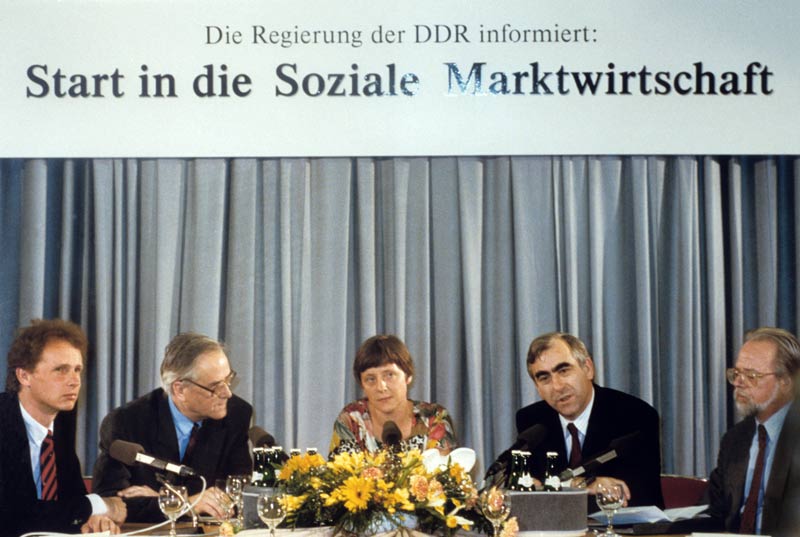
Government spokesperson in the GDR – during the peaceful revolution in the GDR, Angela Merkel joined the “Demokratischer Aufbruch” (DA, i.e. Democratic Beginning) party in 1989 and became the deputy government spokesperson in the first and indeed last freely elected government of the GDR in 1990. The DA, and with it Merkel, joined the CDU in 1990. On the photograph, she is sitting between Federal Finance Minister Theo Waigel (right) and GDR Finance Minister Walter Romberg (left).
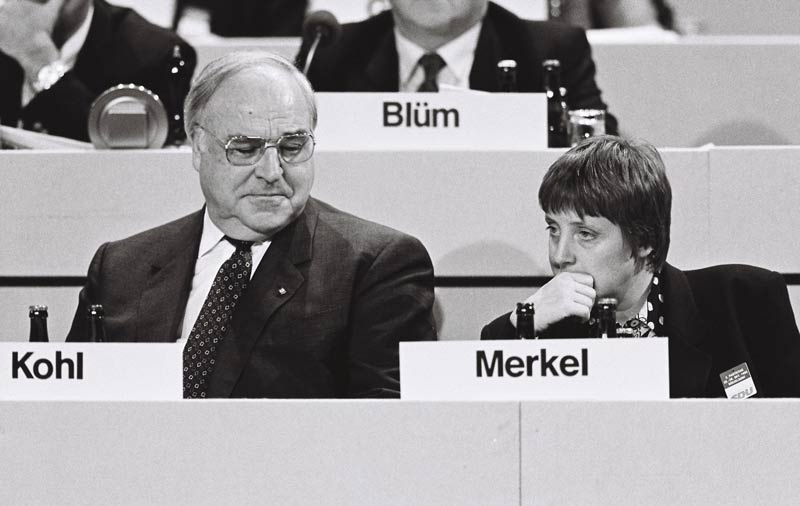
Minister in Helmut Kohl’s cabinet – in 1991, Chancellor Helmut Kohl unexpectedly appointed Angela Merkel as minister for women and youth. She had previously been elected to the Bundestag in her constituency of Stralsund-Rügen-Grimmen in the state of Mecklenburg-Western Pomerania – as she has been in every election since. The photograph was taken at the CDU national party conference in Düsseldorf in 1992.
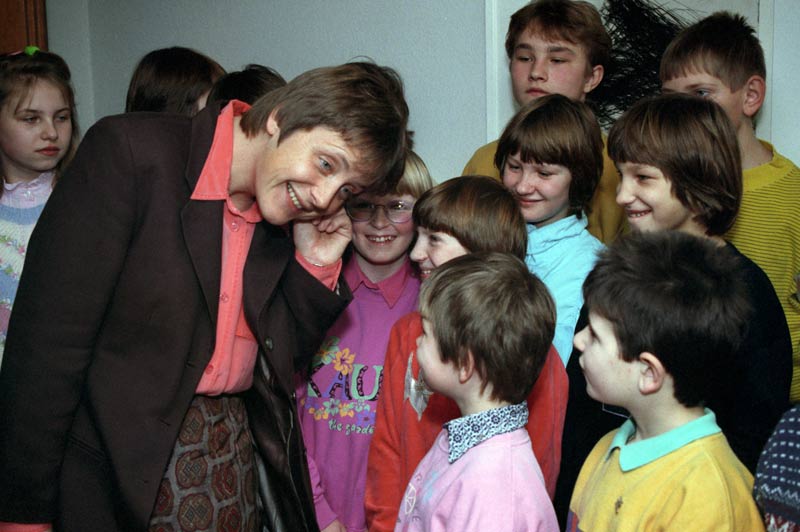
She remained minister for women and youth until 1994. Here she can be seen in Bonn in 1991, talking to children with leukaemia from Chernobyl.
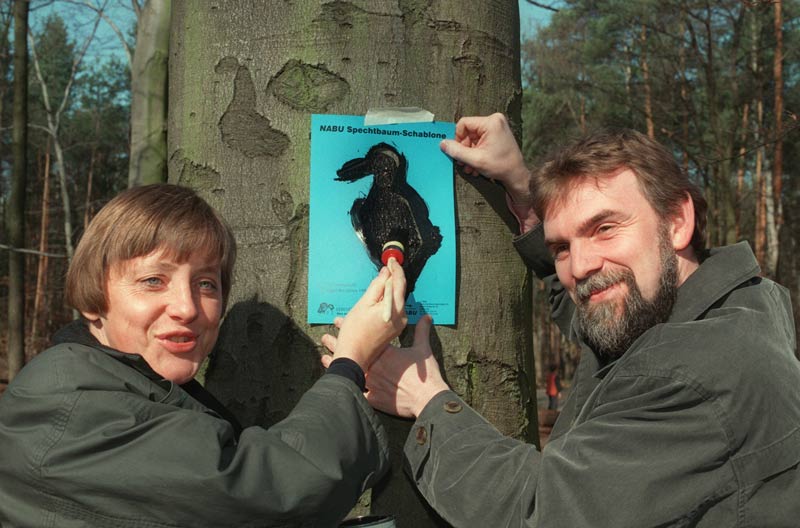
Federal environment minister, or more properly the minister for the environment, nature conservation and nuclear safety, is the post to which Angela Merkel was appointed following the election victory of the CDU/CSU in 1994. The photograph shows her marking woodpecker trees in 1997 alongside Jochen Flasbarth, formerly the president of the Nature and Biodiversity Conservation Union (Nabu) and now state secretary at the Federal Environment Ministry
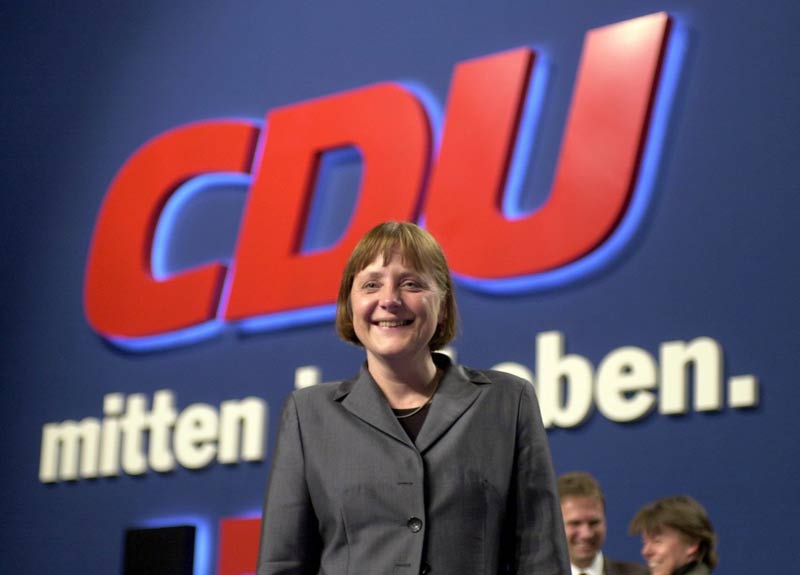
Angela Merkel became party chairperson of the CDU on 10 April 2000. Following the party’s debacle in the 1998 federal elections, which had resulted in a red-green federal government led by Chancellor Gerhard Schröder (SPD), she had already been made the CDU’s general secretary.
The first female chancellor
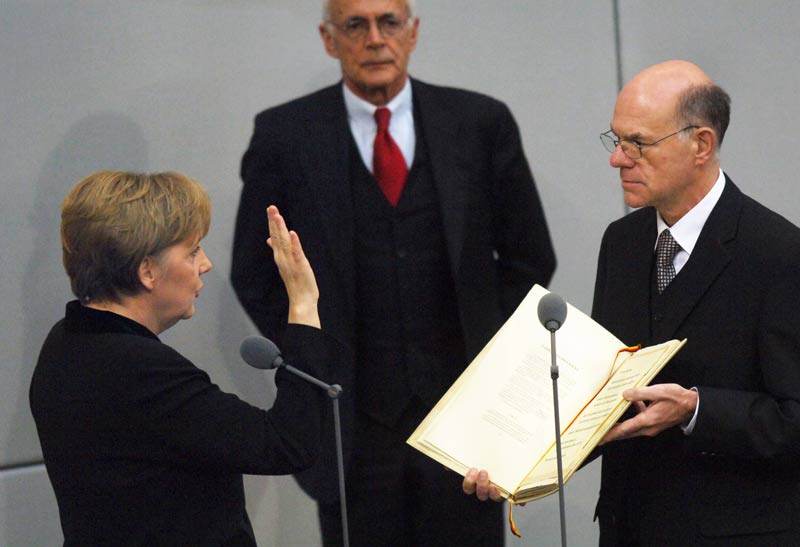
The first election victory – in 2005 the Bundestag elected Angela Merkel to be the first female chancellor in Germany’s history. She was sworn into office by Bundestag President Norbert Lammert on 22 November. She led an alliance of the CDU/CSU and SPD parties, traditionally known in Germany as a “grand coalition”.
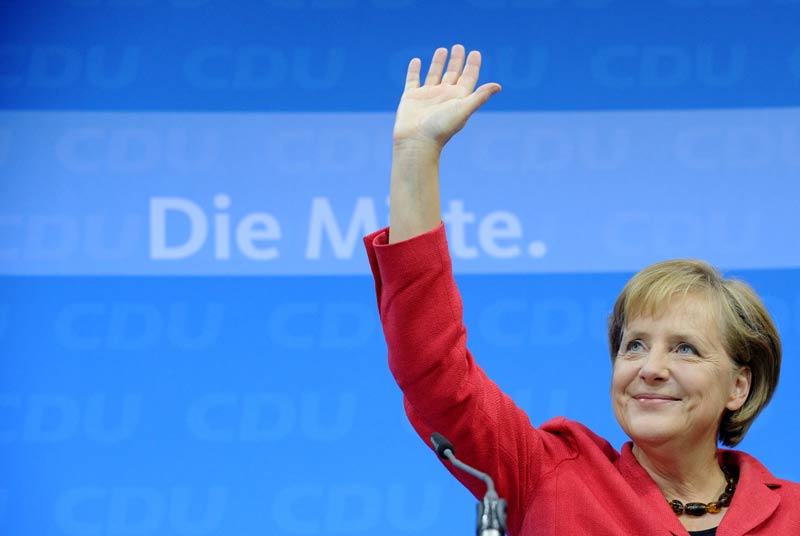
Merkel was re-elected for the first time in 2009. By the evening of the election day it was already clear that she would remain chancellor, albeit now in a coalition with the FDP.
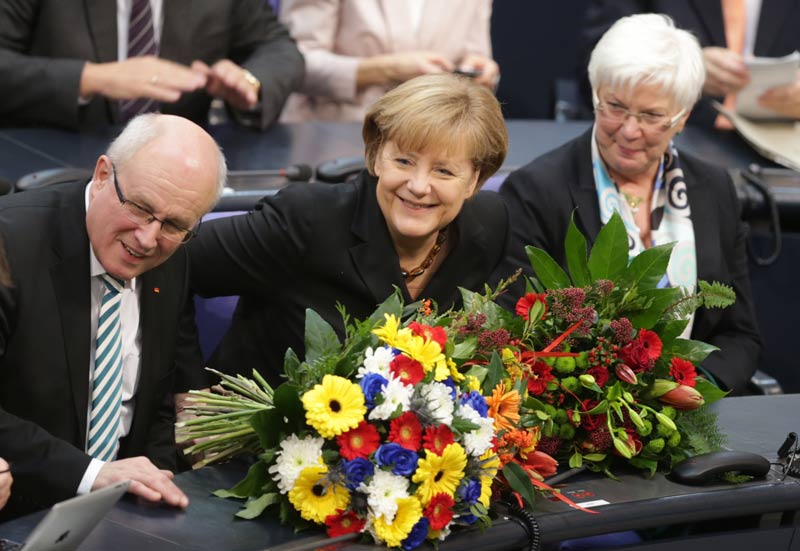
Her second re-election in 2013 resulted in the third grand coalition between CDU/CSU and SPD in German history. The old and new chancellor was presented with flowers at the Bundestag to congratulate her.
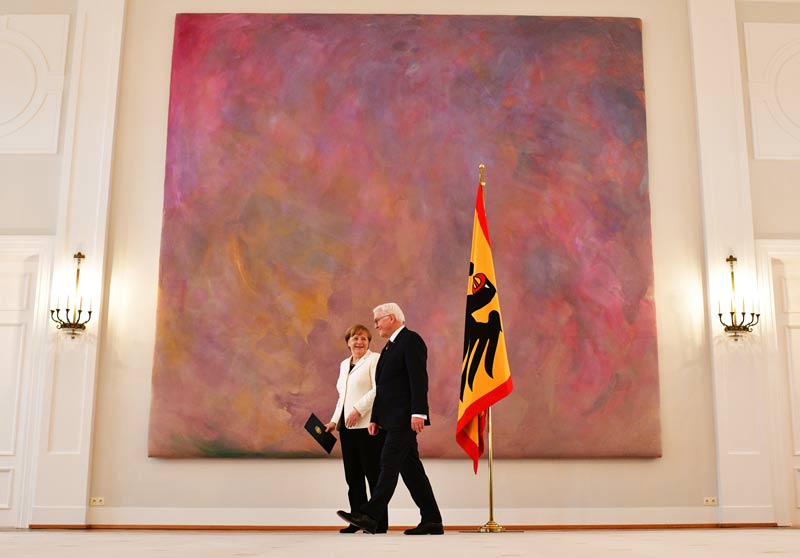
Her third re-election in 2018 saw the grand coalition continue. As usual, Merkel received her certificate of appointment as federal chancellor from Federal President Frank-Walter Steinmeier. The swearing-in ceremony is conducted in the Bundestag by the parliamentary president
The major crises
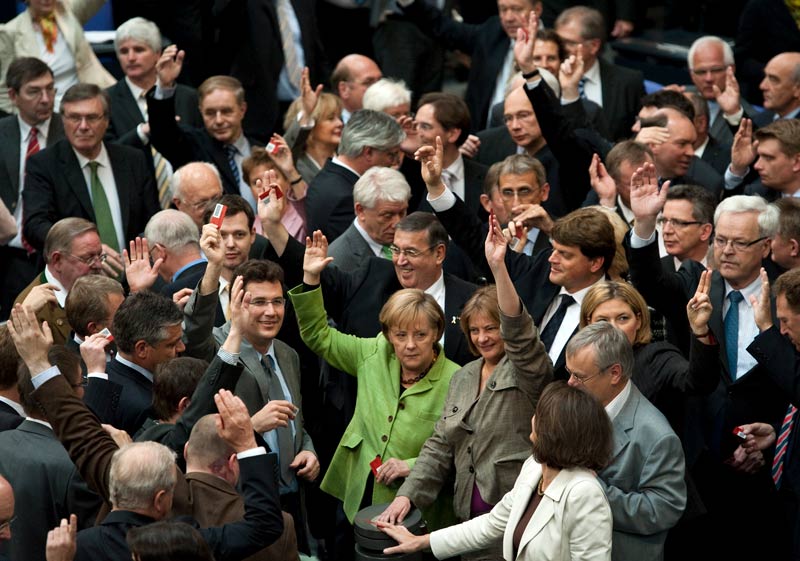
Europe’s financial crisis was probably the toughest challenge Merkel faced during her chancellorship. The so-called euro bailout fund was highly controversial in domestic policy terms in Germany. The picture shows the chancellor at the Bundestag during a vote on euro stabilisation measures in 2010.
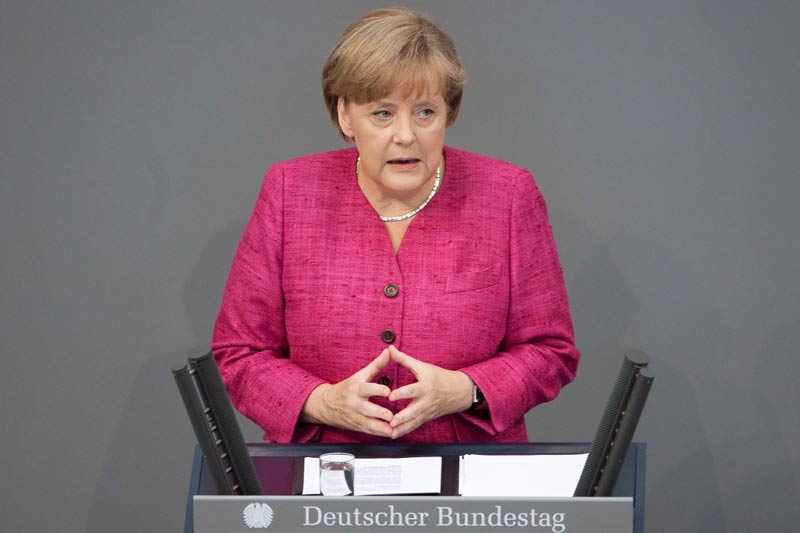
Fukushima and the phase-out of nuclear power were probably the most far-reaching and momentous issues during Merkel’s chancellorship. In 2010, her government had withdrawn the nuclear phase-out decided by the previous government. Following the Fukushima disaster, Merkel announced to the Bundestag on 9 June 2011 that nuclear power would be phased out in Germany.
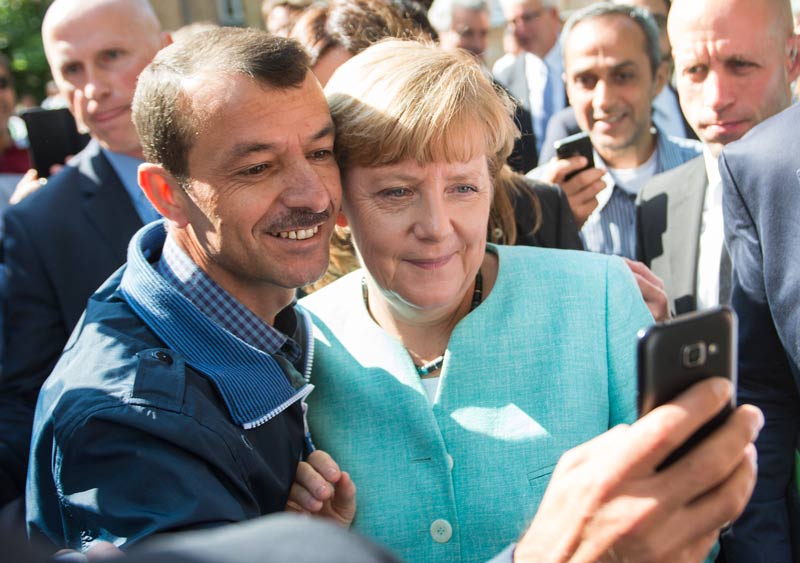
The refugee crisis of 2014 was the biggest humananitarian challenge during Merkel’s time in office. As hundreds of thousands of refugees poured into Germany, Merkel called upon the country to show solidarity with her now-famous phrase “Wir schaffen das” – which means roughly “We can do this”. This well-known selfie was taken at a refugee facility in Berlin in 2015.
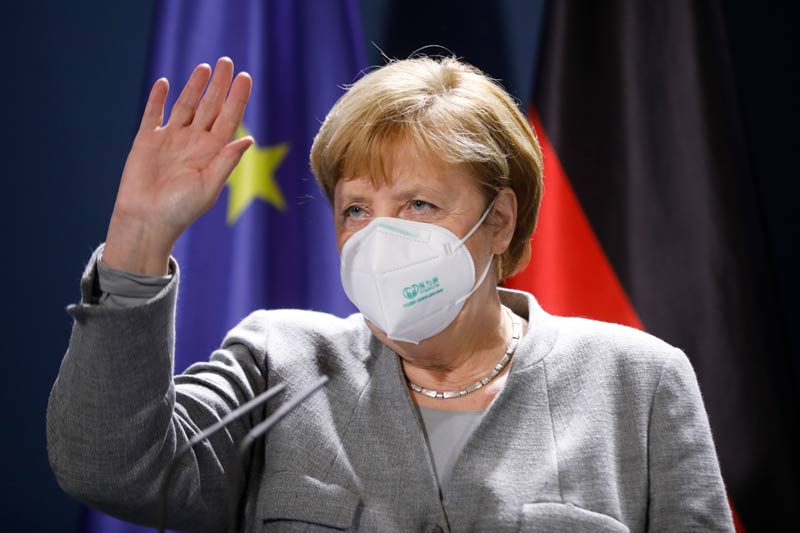
Germany found itself utterly unprepared when the coronavirus pandemic hit. In the fight against the virus, Merkel’s government resolutely opted for a joint European action plan.
Chancellor for the world
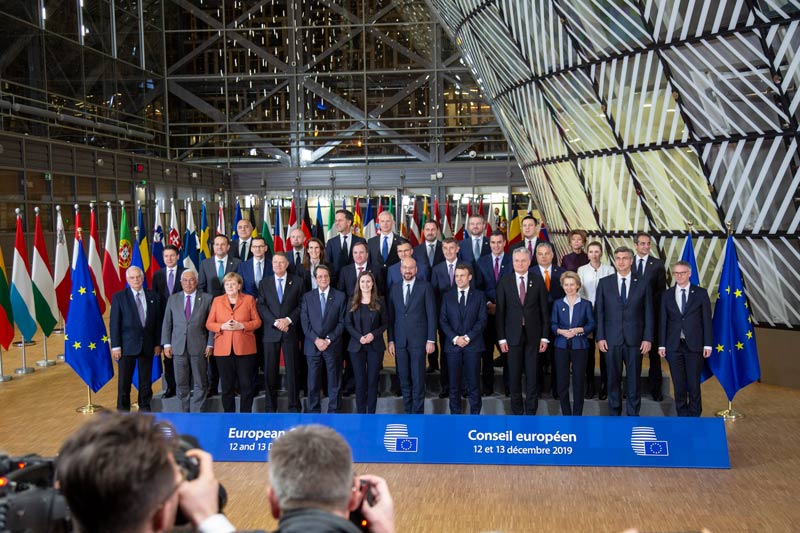
The European Union was at the heart of the foreign policy of all governments led by Angela Merkel. This is in line with the fundamentally multilateral approach followed by German foreign policy. The photograph showing the European heads of state and government was taken in Brussels in 2019.
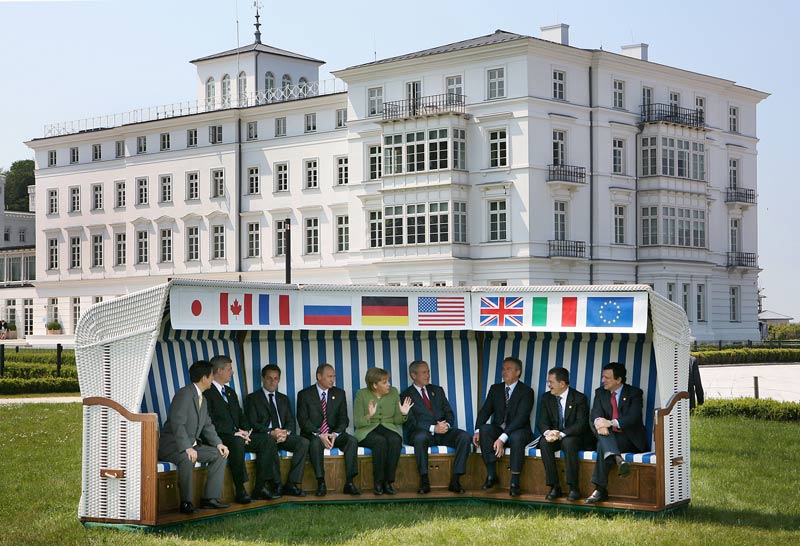
German multilateralism is also reflected in the importance Merkel attaches to international organisations such as the UN and Nato, as well as to informal groupings such as the G7/G8 or the G20. In 2007, the German chancellor received the G8 heads of state and government, as well as EU Commission President José Manuel Barroso, in Heiligendamm.
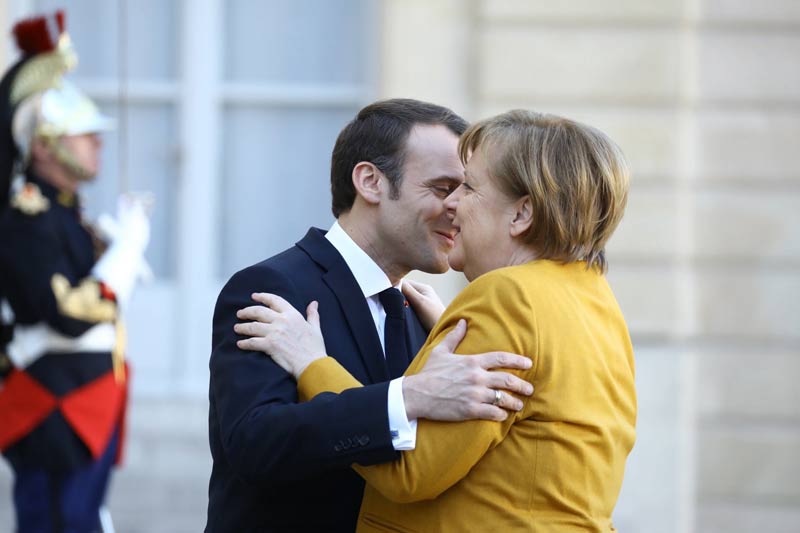
Germany has enjoyed a very special relationship with France for decades. This is also reflected in Merkel’s trust in French presidents, from Jacques Chirac to Emmanuel Macron (pictured).
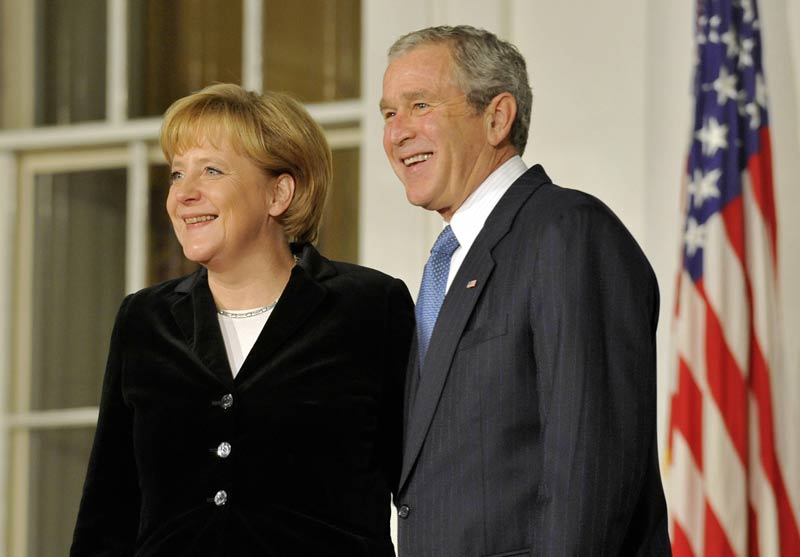
George W. Bush was the first of four presidents to govern the USA during Angela Merkel’s chancellorship. Merkel’s governments gave the highest priority to transatlantic relations and cultivated the traditionally close relations between Germany and the USA. The picture was taken during a visit to Washington by Merkel in 2008.
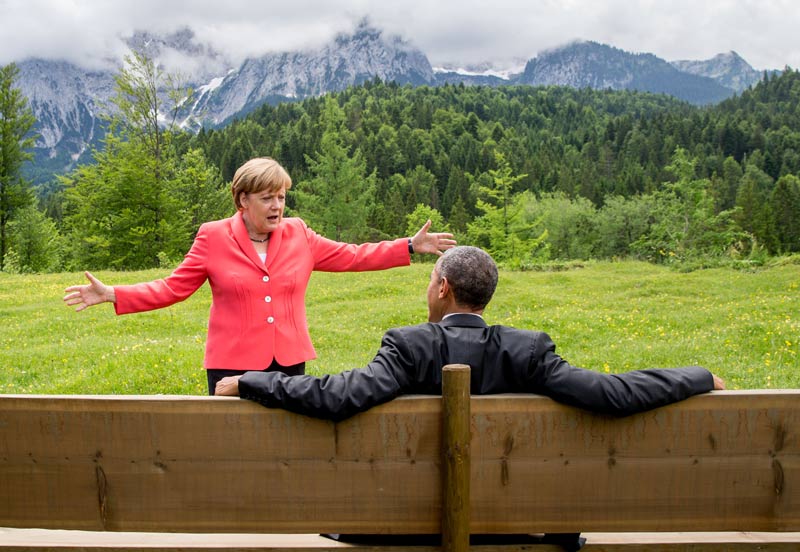
Barrack Obama was the US president with whom Merkel shared the most political views. This was also evident in the informal conversation she enjoyed with him during the 2015 G7 meeting in Germany, which was held in Elmau at the foot of the Wetterstein mountain range in the Alps.
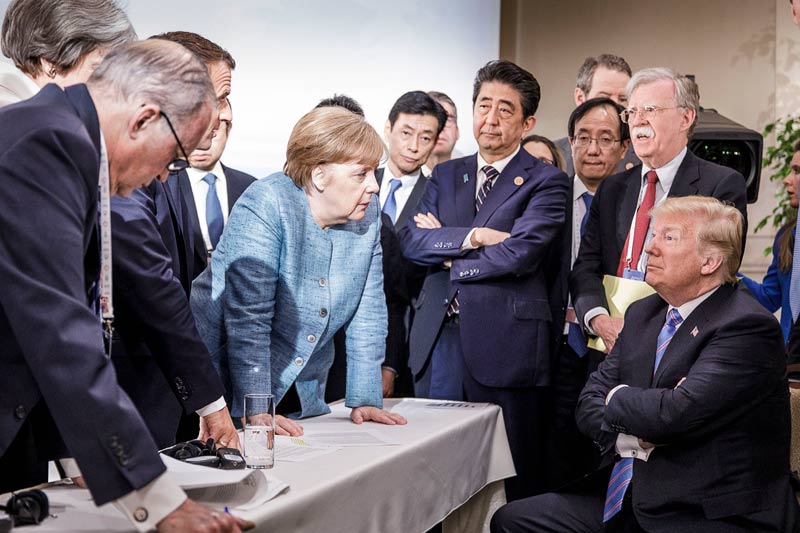
Donald Trump and his presidency proved a serious test of endurance for German-American relations. There was virtually no common ground between the multilateral German approach and Trump’s policies. This famous picture taken at the G7 summit in Quebec in 2018 illustrates the relationship between the German and US governments during those years.
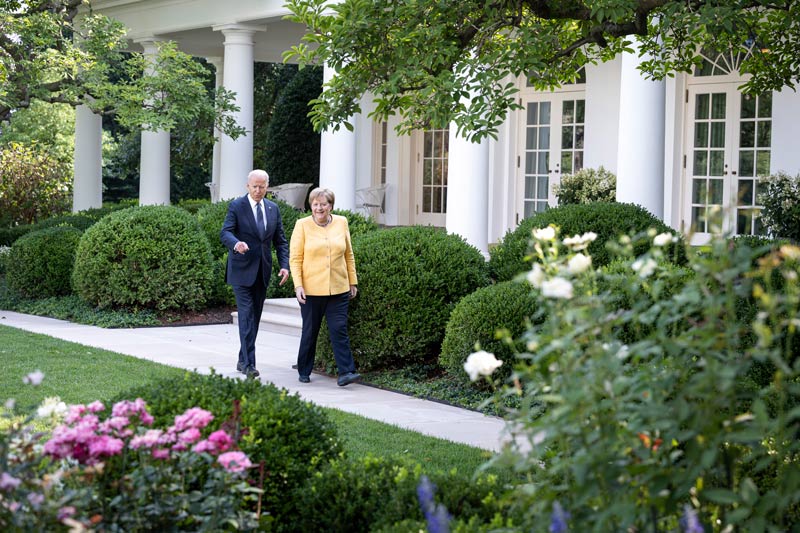
Joe Biden is the embodiment of the German government’s hopes that a return to a closer transatlantic alliance based on shared values and interests will be possible. Angela Merkel visited the new US president in July 2021.
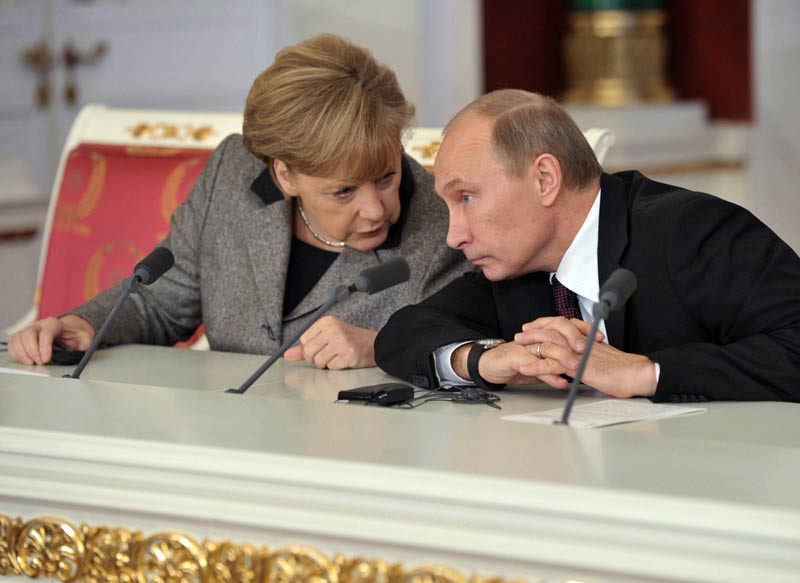
Vladimir Putin was someone with whom Merkel frequently engaged in conversation. The chancellor was always of the opinion that the channels of communication with Russia must be kept open – even when relations became increasingly fraught following the illegal annexation of Crimea in 2014.
Chancellor, but outside politics
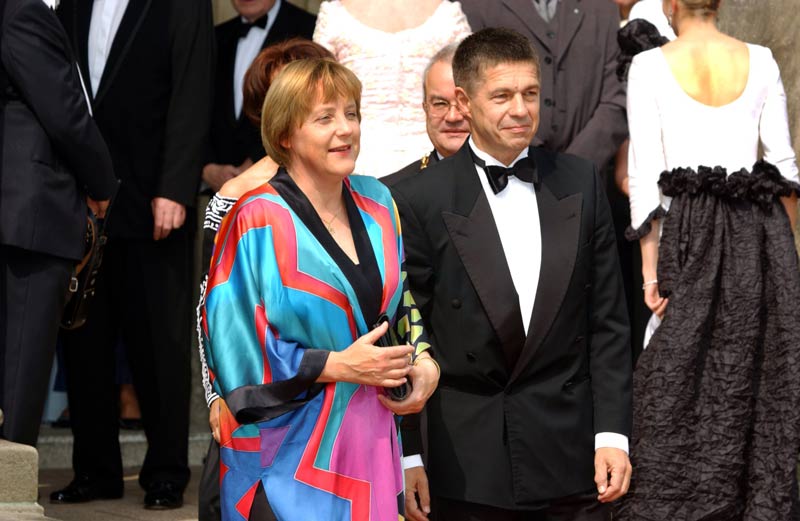
Joachim Sauer, a chemist, has been married to Angela Merkel since 30 December 1998. The couple only rarely appear in public together. One such occasion is the annual Bayreuth Wagner Festival, which the chancellor regularly attends. This picture was taken in 1998.
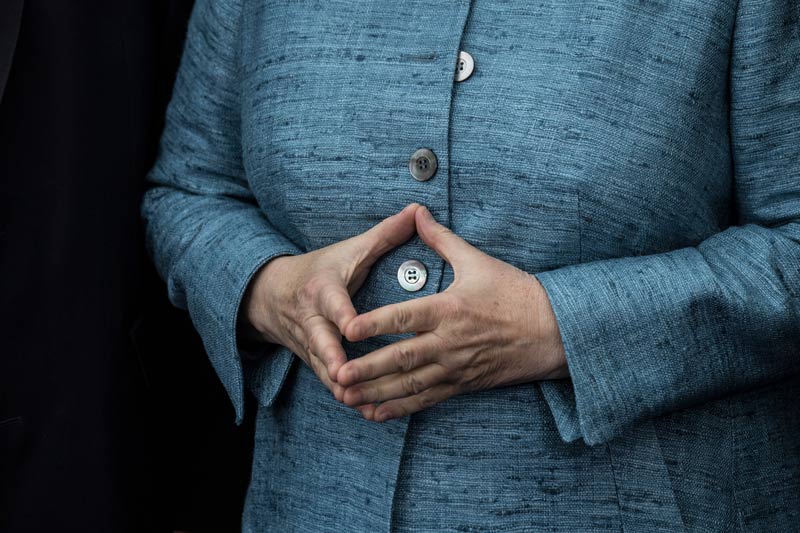
This hand gesture, known as the Merkel diamond or the triangle of power, is typical of Angela Merkel. Though it has been the subject of much philosophising and indeed considerable humour, little in the way of genuine insight has been gained.
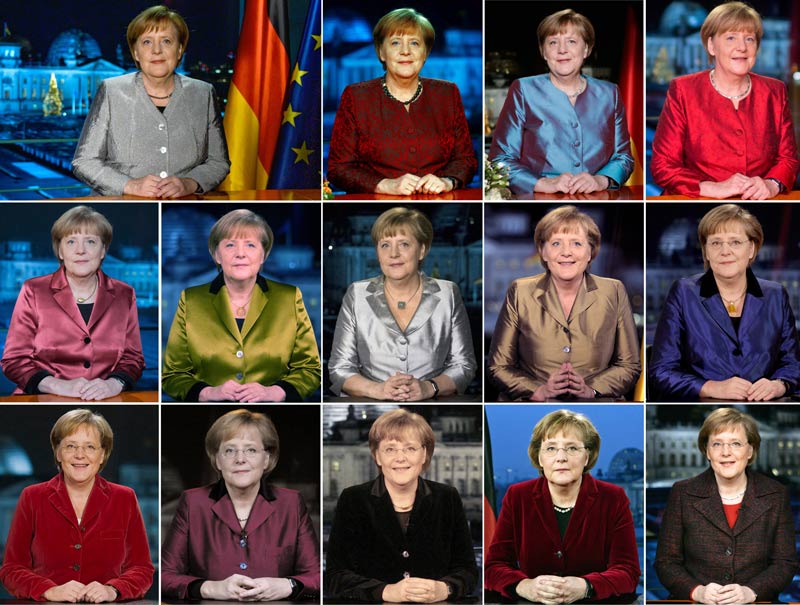
Colourful blazers are one of the chancellor’s trademarks, which means she tends to be easy to spot on the group photos taken at international conferences. There is frequent speculation in the media about which colour might convey which message – without any satisfactory conclusions ever being drawn. The photo shows Merkel giving her TV New Year addresses to the nation from (bottom right) to 2018 (top left).
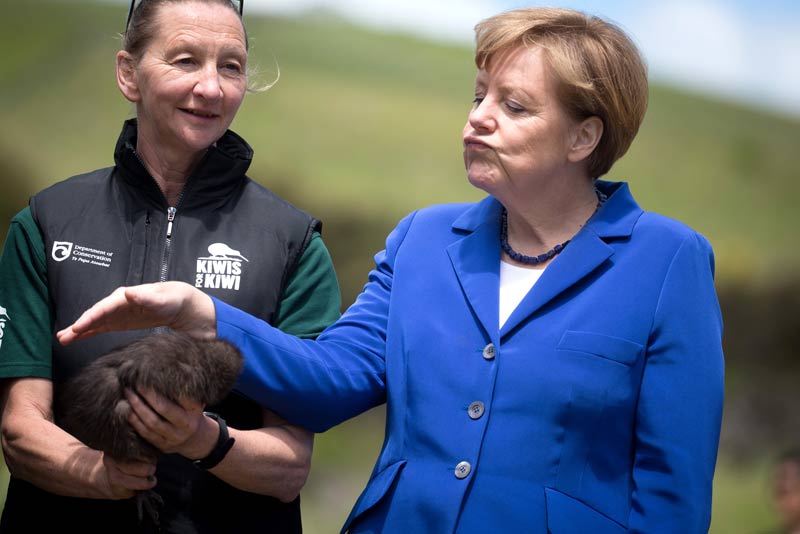
Animals are not known to play any role in Angela Merkel’s private life. However, she did reply “I like animals” when asked by a member of the public in 2019. Here she can be seen making the acquaintance of a kiwi during a state visit to New Zealand in 2014.
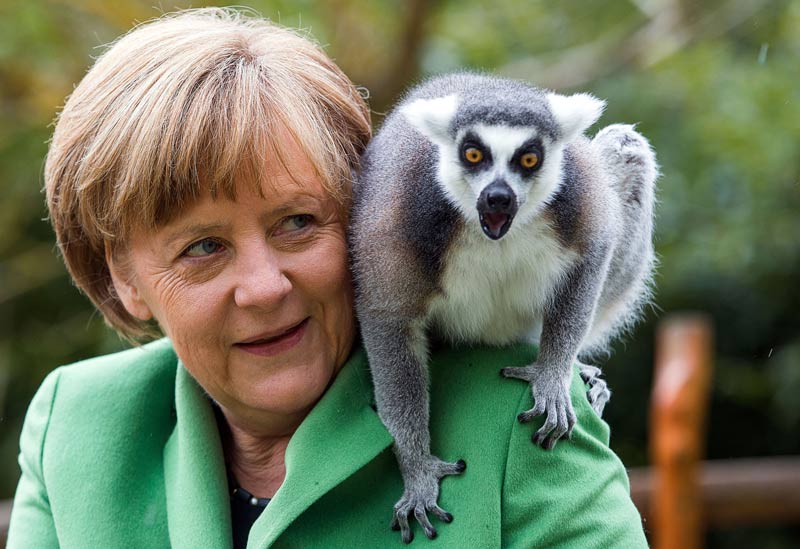
A lemur can claim to have come closest to the chancellor, at least in public. The two met in Mecklenburg-Western Pomerania in 2015. Incidentally, when asked by the same member of public which her favourite animal is, Merkel replied: “I find the common toad very interesting, and bats”.
You would like to receive regular information about Germany? Subscribe here:
